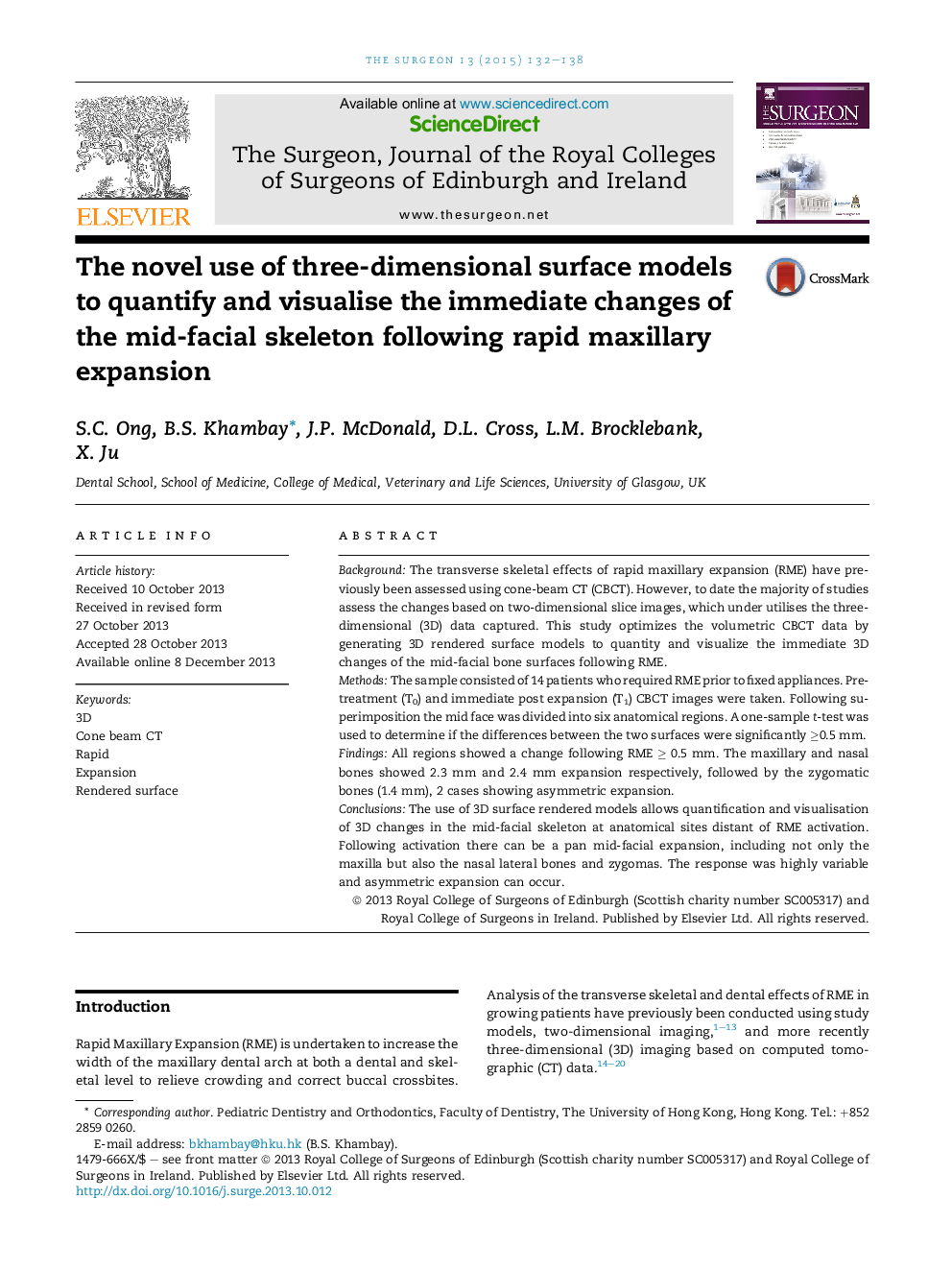| Article ID | Journal | Published Year | Pages | File Type |
|---|---|---|---|---|
| 3178599 | The Surgeon | 2015 | 7 Pages |
BackgroundThe transverse skeletal effects of rapid maxillary expansion (RME) have previously been assessed using cone-beam CT (CBCT). However, to date the majority of studies assess the changes based on two-dimensional slice images, which under utilises the three-dimensional (3D) data captured. This study optimizes the volumetric CBCT data by generating 3D rendered surface models to quantity and visualize the immediate 3D changes of the mid-facial bone surfaces following RME.MethodsThe sample consisted of 14 patients who required RME prior to fixed appliances. Pre-treatment (T0) and immediate post expansion (T1) CBCT images were taken. Following superimposition the mid face was divided into six anatomical regions. A one-sample t-test was used to determine if the differences between the two surfaces were significantly ≥0.5 mm.FindingsAll regions showed a change following RME ≥ 0.5 mm. The maxillary and nasal bones showed 2.3 mm and 2.4 mm expansion respectively, followed by the zygomatic bones (1.4 mm), 2 cases showing asymmetric expansion.ConclusionsThe use of 3D surface rendered models allows quantification and visualisation of 3D changes in the mid-facial skeleton at anatomical sites distant of RME activation. Following activation there can be a pan mid-facial expansion, including not only the maxilla but also the nasal lateral bones and zygomas. The response was highly variable and asymmetric expansion can occur.
